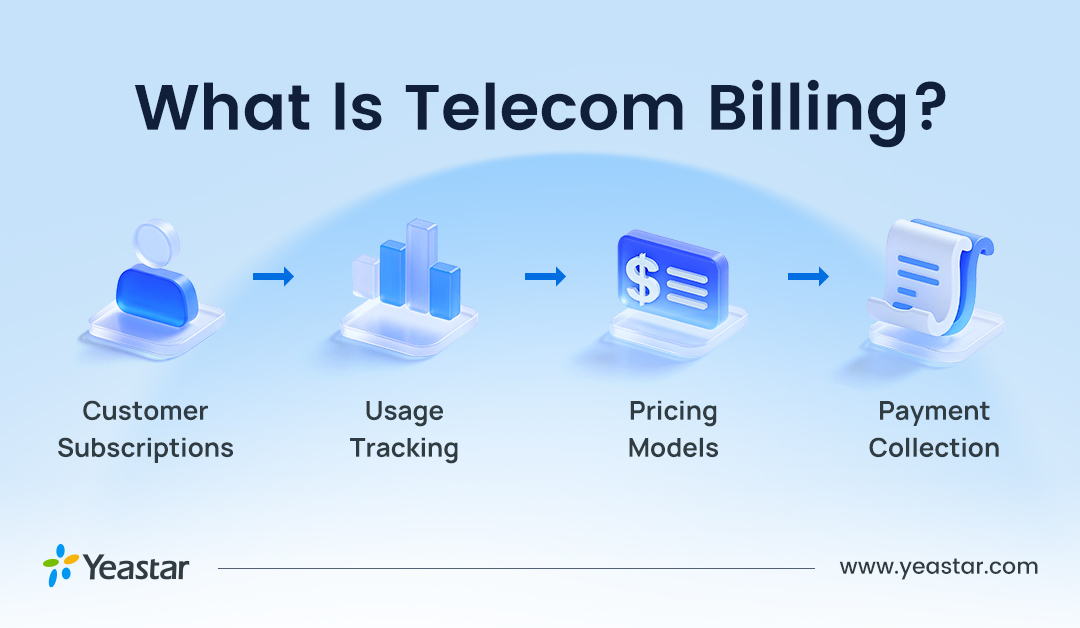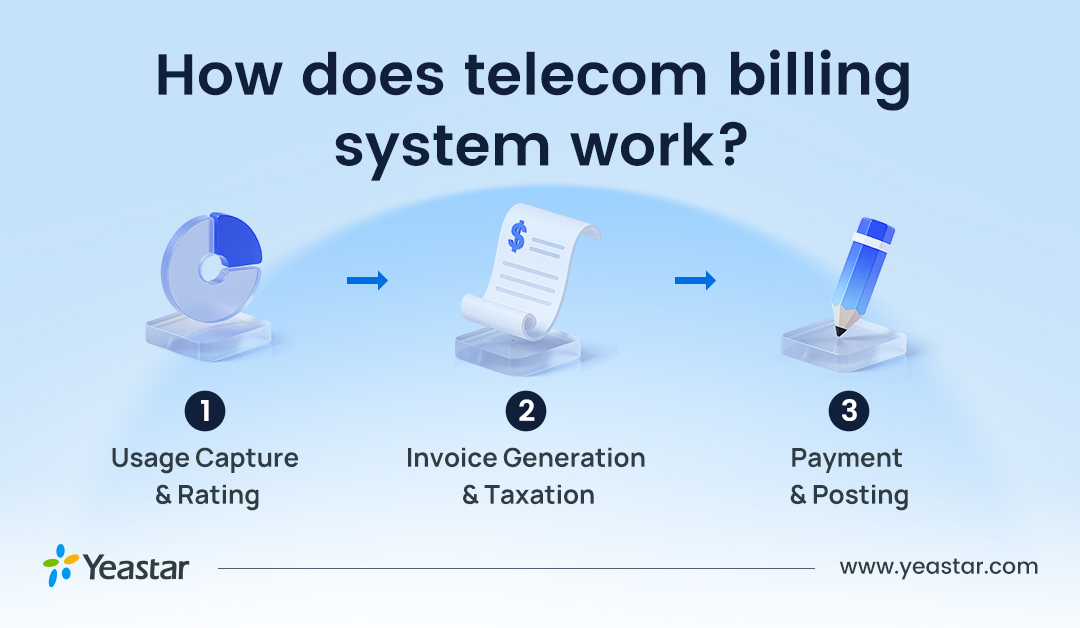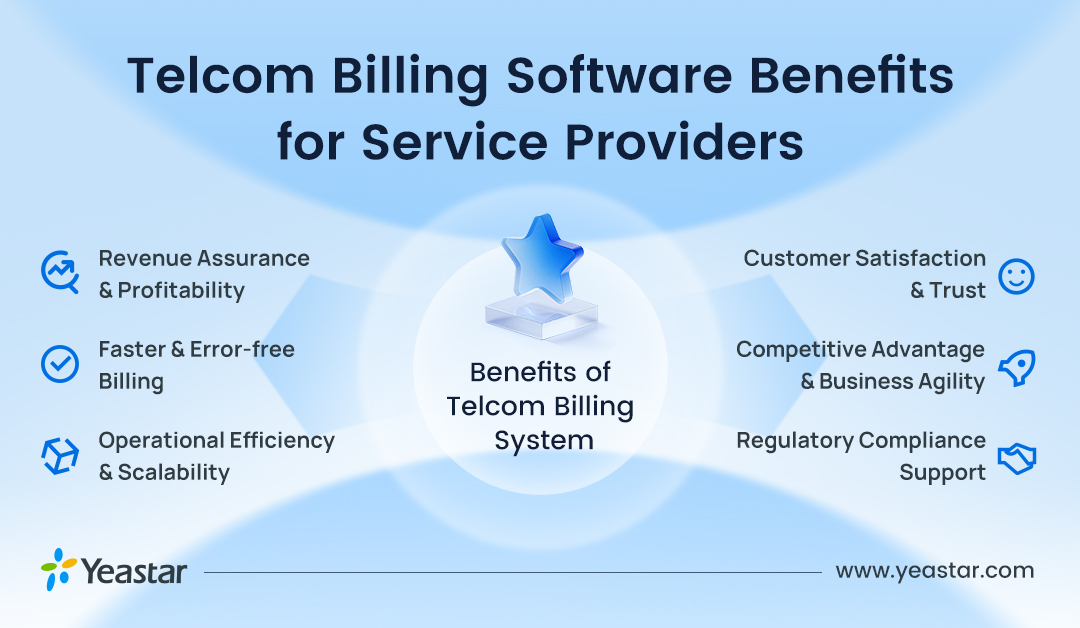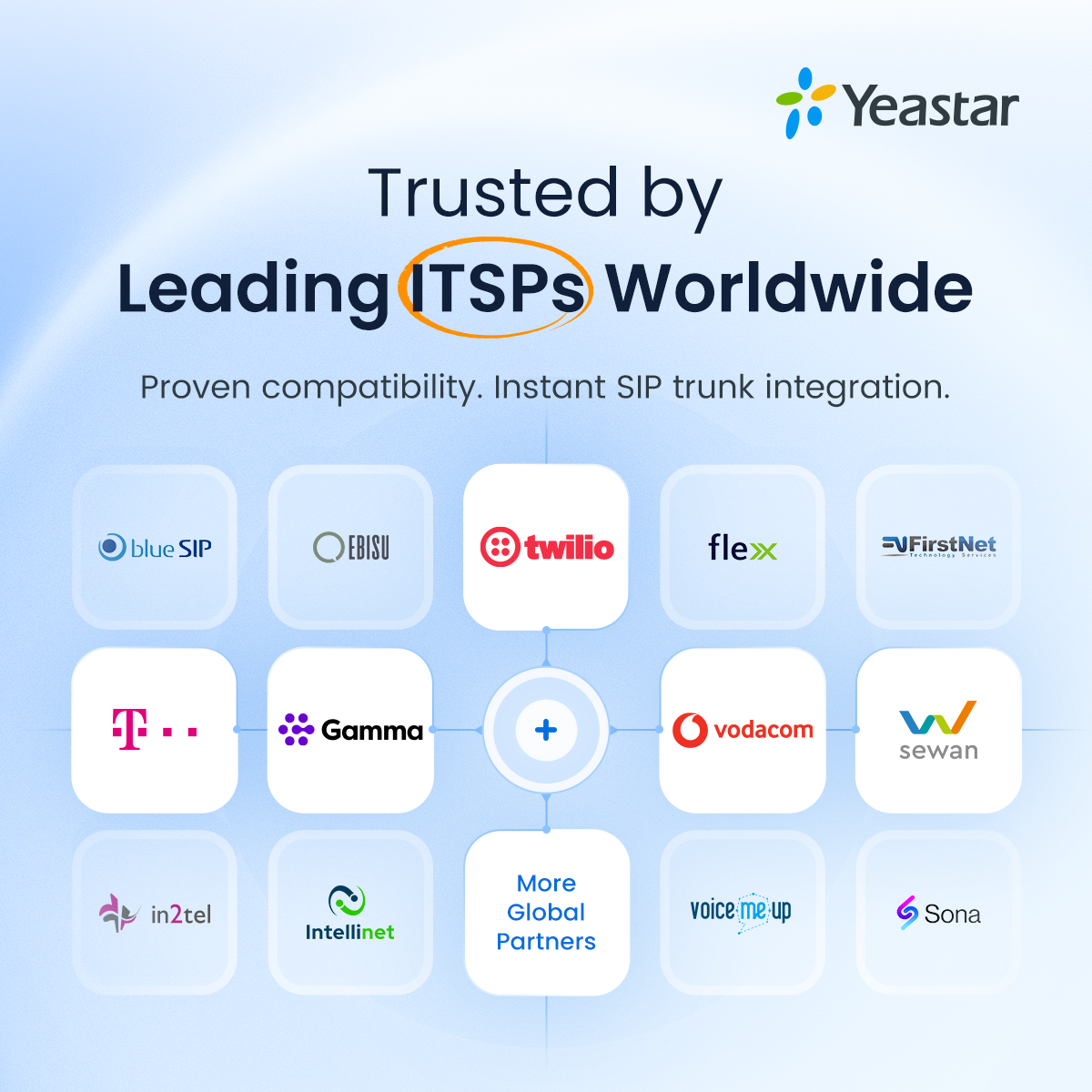
The telecom billing industry is projected to reach 31.49 million USD by 2030. Efficient telecom billing is crucial for both Managed Service Providers (MSPs) and telecommunications service providers. It not only involves issuing invoices but also plays a key role in delivering superior service and maintaining profitability.
This article will provide a comprehensive understanding of telecom billing — covering what it is, how it works, and how telecom billing software can help overcome common billing challenges.
Jump to ↓
- What is Telecom Billing?
- 3 Typical Types of Telecom Bill Cycle
- How Does Telecom Billing System Work?
- Why Telecom Billing Matters to Service Providers
- How Yeastar Solution Helps in Telecom Billing?
Telecom billing is the end-to-end process of managing the financial lifecycle of telecommunications services. It involves collecting and processing usage data for voice, data, and internet services, calculating charges, applying taxes, generating invoices, and collecting payments. Understanding this process is vital for maintaining efficient operations and ensuring customer satisfaction. Before diving into the telecom billing process, it’s helpful to understand the billing cycle itself. The telecom billing cycle is a recurring, multi-stage operation designed to ensure customers are billed accurately and on time. It can generally be broken down into three common types: This is the most commonly used billing method by telecom providers. The service provider sets a fixed billing period (e.g., monthly), and customers use the service first. At the end of the cycle, the system generates an invoice based on usage, which is then sent to the customer. Payments can be made online, by phone, or by mail. Billing cycles typically span 30, 45, 60, or 90 days. Postpaid billing offers flexibility, allowing customers to use services without upfront payment. It’s especially popular among both business and individual users who prefer the convenience of “use now, pay later.” As the name suggests, customers pay in advance for telecom services. The billing system deducts fees in real time based on predefined units such as call minutes, data usage, or text messages. Customers receive regular itemized bills detailing all charges. This model offers greater flexibility and transparency, enabling users to monitor their spending in real time and adjust their usage accordingly. For service providers, prepaid billing helps avoid disputes that often arise after a billing cycle ends. This approach combines multiple telecom services into a single, unified bill. Unlike traditional billing systems that generate separate invoices for each service, convergent billing integrates everything into one comprehensive statement. While this simplifies the customer experience, it adds complexity for the service provider, which must ensure its billing system can accurately calculate charges—especially for customers with multiple services or customized plans. This is the foundational stage where all customer activity is tracked and assigned a value. In this phase, the processed usage data is compiled into the final customer invoice. The final phase focuses on closing the financial loop for that billing period. For MSPs and ITSPs, billing is far more than just sending invoices. It is a core business function that directly impacts revenue, customer relationships, and operational efficiency. A robust and accurate billing system is a strategic asset, while a poor one can be a significant liability. MSPs and ITSPs often employ complex pricing models (e.g., per-user, per-device, usage-based, flat-rate, or tiered plans). A sophisticated billing system can accurately manage this complexity without errors. This ensures that every service is billed correctly, invoices are issued promptly, and payments are collected efficiently — thereby stabilizing cash flow. Telecom billing automates the invoicing process, eliminating countless hours of manual work, reducing administrative overhead, and minimizing human error. Additionally, as an MSP or ITSP grows — whether by adding new customers, services, or expanding into new regions, its billing system must be able to scale effortlessly. A modern billing platform supports this growth without requiring a proportional increase in administrative staff. Nothing erodes customer trust faster than a billing error. Accurate, clear, and easy-to-understand invoices are essential for a positive customer experience and help minimize time-consuming support calls related to charge disputes. Modern billing platforms often provide customer self-service portals, allowing clients to view usage history, download invoices, and manage their accounts independently. This empowers customers while reducing the support burden on your team. To compete effectively, MSPs and ITSPs frequently bundle services — such as VoIP, internet, and managed IT support—into single offerings. Convergent billing is essential to combine these services into one clear, unified invoice, significantly enhancing convenience for customers. Moreover, a billing system serves as a goldmine of business intelligence. It offers valuable insights into the most profitable services, customer usage trends, and potential churn risks, empowering smarter business decisions and more targeted customer offers. The billing system seamlessly integrates with any telecom provider or PBX platform, automatically collecting CDRs to rate and bill telecommunications usage. This enables smooth interoperability with diverse existing infrastructure. Yeastar offers API-based integration with external systems. Although invoicing functionality is not natively included, many partners have successfully linked Yeastar with billing solutions such as VariBill, Man3000, or custom financial and CRM systems — using our open APIs. Additionally, Yeastar provides precise usage tracking, giving partners access to detailed call records, CDR data, and extension-level metrics including call duration and activity time. These insights support accurate customer usage analysis, enabling reliable revenue reporting and charge calculation. Provide fully featured unified communications and contact center solutions designed to meet a wide range of customer requirements. We’re looking for innovative ITSPs ready to collaborate in defining the future of unified communications. Discover how Yeastar PBX can help you deliver adaptable, scalable UC services under your own brand.What is telecom billing?

Telecom Billing Cycle
Postpaid Billing
Prepaid Billing
Convergent Billing
How does telecom billing system work?

Phase 1: Usage Capture & Rating (The “Data” Phase)
Phase 2: Invoice Generation & Taxation (The “Bill” Phase)
Phase 3: Payment & Posting (The “Revenue” Phase)
Why telecom billing matters to service providers like MSP and ITSP?

Revenue Assurance & Profitability
Operational Efficiency & Scalability
Customer Satisfaction & Trust
Competitive Advantage & Business Agility
How Yeastar solution helps in telecom billing?

More Reasons to Partner with Yeastar


